Seven tips for rebuilding a genetically superior herd
Producers who are preparing to restock after fire, flood or prolonged drought can use these events as an opportunity to rebuild a genetically superior herd.
Felicity Hamlyn‑Hill of Beef Enterprise Advisory Services delivers MLA’s Breeding EDGE workshops and said genetic improvement is important to:
- increase individual animal performance and overall herd performance and profitability
- speed up rebuilding with better weaning rates and less reproductive wastage
- improve opportunities and choice in animal selection, retention and culling.
“The genetic improvement decisions you make now could impact your herd’s performance for at least the next 15 years,” Felicity said.
Here are Felicity’s top tips to build a better beef herd:
1. Determine what traits contribute to key profit drivers
Critically assess what aspects of herd performance drives your profit. Is it fertility, growth, carcase or reducing mortalities and in what combination? Where can improvements be made to lift the performance of your current herd? Where specifically would you get the most lift?
For more information on traits and how they can help drive your business performance, visit: genetics.mla.com.au
2. Understand relationships between traits
Sometimes selecting for one trait can create change (desirable or undesirable) in another. If the relationship between traits is undesirable, it’s important to place appropriate selection pressure to counter the effects.
3. Rank the traits in order of importance
This makes developing breeding objectives easier. It also aids sire selection (and elimination) as bulls can be viewed as a package of traits. Too many traits make it difficult to maintain selection pressure on each one, so emphasise the most important traits to improve herd performance and rank these.
4. Develop SMART breeding objectives
After selecting and ranking traits, the next step is to develop SMART (specific, measurable, achievable, realistic and timelined) breeding objectives and write them down. These represent the ideal animal you wish to breed. They should be long‑term goals that don’t change based on short‑term market signals. There may be a selection index which matches your breeding objectives to help balance a number of traits.
5. Identify appropriate selection criteria to ensure animals have genetic merit for priority traits
There are large genetic differences within a breed for traits. However, the genetic merit of many commercially important traits cannot be accurately assessed visually. Fat can hide poor muscling; growth rate can be masked by feeding; nutrition and the environment; key fertility traits cannot be assessed visually; and inherent temperament can be modified by handling.
Objective measurement assists in ensuring animals selected for breeding will have the desired genetics for traits of importance. Estimated Breeding Values (EBVs) are calculated from measurement information on the sale animal and its relatives. Increasingly, the addition of genomic information is used to improve the accuracy of EBVs.
Understand what each EBV is and which one is most appropriate. For example, 200‑day growth EBVs are the most appropriate selection criteria for selecting for early growth. For fertility traits, there are a number of EBVs depending on the breed, such as Days to Calving.
Not all bulls for sale have EBVs, or the full suite of EBVs. If producers want to change this, they can start by requesting their bull breeder collects information to produce EBVs for important traits.
6. Manage the genetics to match the environment
Cattle that are not adapted are costly to run, may require special husbandry and may not be able to adequately express the genetic merit for the production traits they are recognised for in other environments. It’s important the breed mix can perform in the given environment, especially when cross‑breeding.
7. Build your knowledge
Workshops such as Breeding EDGE help producers understand genetic improvement and genetic tools, as well as fertility management, to assist in herd rebuilding particularly after times of drought to ensure profitable beef herds are the result.
Want more breeding, business, nutrition and grazing tips from red meat industry experts?
Come along to one of MLA’s upcoming EDGE workshops.
|
NORTHERN |
||||
|---|---|---|---|---|
| Breeding EDGE | Business EDGE | Business EDGE Young Guns | Nutrition EDGE | Grazing EDGE |
|
|
|
|
15 February – Goondiwindi, QLD
|
25 February – Rockhampton, QLD
|
|
SOUTHERN |
|
|---|---|
| Business EDGE | Business EDGE Young Guns |



